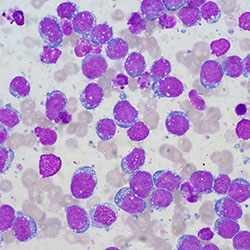Dr Ignacia Arteaga
 Probably most of us know someone affected by cancer. Millions of pounds are spent every year on cancer research to reduce the prevalence and seriousness of the many cancers that affect people living in the UK. Practices of biomedical innovation are expanding the frontiers of this research towards what is seen as the ‘natural history’ of the disease. This is a biomedical narrative that differentiates between developmental stages of the disease according to various biological hallmarks. We hear about therapy ‘breakthroughs’ in the media offering the possibility of extending the lives of those for whom previous therapies could not contain the spread of the disease in their bodies, but there are many researchers trying also to ‘catch’ malignant cells when the process of cellular division has just started. This scientific enterprise is called the ‘early detection of cancer’. By learning about the types and site sources of ‘signals’ that initial cancer mutations trigger in our bodies, and assembling technologies through which it is possible to observe these signals, early detection projects aim to reduce the personal, social and financial impact that suffering from cancer poses.
Probably most of us know someone affected by cancer. Millions of pounds are spent every year on cancer research to reduce the prevalence and seriousness of the many cancers that affect people living in the UK. Practices of biomedical innovation are expanding the frontiers of this research towards what is seen as the ‘natural history’ of the disease. This is a biomedical narrative that differentiates between developmental stages of the disease according to various biological hallmarks. We hear about therapy ‘breakthroughs’ in the media offering the possibility of extending the lives of those for whom previous therapies could not contain the spread of the disease in their bodies, but there are many researchers trying also to ‘catch’ malignant cells when the process of cellular division has just started. This scientific enterprise is called the ‘early detection of cancer’. By learning about the types and site sources of ‘signals’ that initial cancer mutations trigger in our bodies, and assembling technologies through which it is possible to observe these signals, early detection projects aim to reduce the personal, social and financial impact that suffering from cancer poses.
From July 2019 until June 2022, I will be working with Dr Maryon McDonald and Dr Perveez Mody as Philomathia Research Associate on an exciting project relating to the early detection of cancer in the UK. I will be undertaking ethnographic research within a broad field that concerns the development of diagnostic technologies through to their clinical use and social effects. We know that cancer can change people’s relationships with others, re-order their world and change their own and others’ apperceptions of their bodies. Through detailed observations, sensitive conversations and careful participation, I will be tracing the practices of a multidisciplinary group of stakeholders which includes scientists, engineers, clinicians, patients, biomedical research subjects and their support networks. The project will tease out practices of biomedical innovation and their coordination across different disciplines into effective technologies of early detection, and the consequences for those tested.
